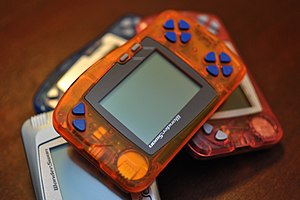| Display title | Wonder Swan |
| Default sort key | Wonder Swan |
| Page length (in bytes) | 2,786 |
| Namespace ID | 0 |
| Page ID | 153143 |
| Page content language | en - English |
| Page content model | wikitext |
| Indexing by robots | Allowed |
| Number of redirects to this page | 1 |
| Counted as a content page | Yes |
| Number of subpages of this page | 0 (0 redirects; 0 non-redirects) |
| Page image |  |
| Edit | Allow all users (infinite) |
| Move | Allow all users (infinite) |
| Delete | Allow all users (infinite) |
| Page creator | m>Import Bot |
| Date of page creation | 21:27, 1 November 2013 |
| Latest editor | MilkmanConspiracy (talk | contribs) |
| Date of latest edit | 02:46, 26 March 2024 |
| Total number of edits | 11 |
| Recent number of edits (within past 180 days) | 1 |
| Recent number of distinct authors | 1 |
Description | Content |
Article description: (description)
This attribute controls the content of the description and og:description elements. | Oh, the Wonder Swan. Bandai's entrant into the handheld console market that never received a release in the United States. In style it looks like somebody crossed an iMac of the era (Bondi Blue!) with a Game Boy. It came in a multitude of colors, and eventually got an upgrade with the Wonder Swan Color, and another upgrade with the SwanCrystal. It was the brainchild of Gunpei Yokoi, father of the Game Boy, who was unhappy with being Kicked Upstairs at the Big N after the failure of Virtual Boy and accordingly left for their main competitor. Unfortunately, after Yokoi's untimely death in a car crash, the project kind of lost momentum -- and it was when Nintendo was releasing its hugely successful Game Boy Advance, which eclipsed it quite quickly, and in the end it never reached western shores. Notable for having quite a few popular Final Fantasy games ported to it. |
